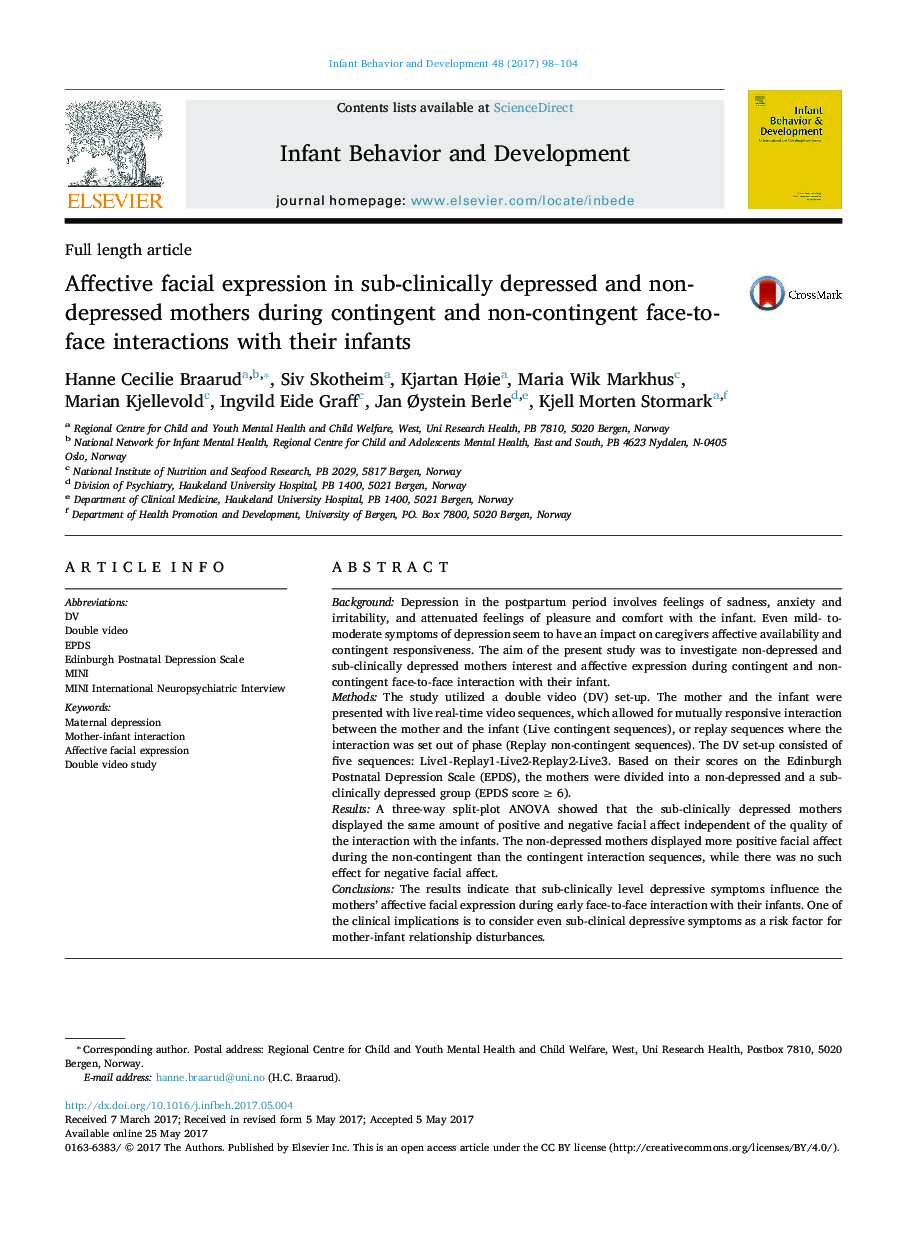| کد مقاله | کد نشریه | سال انتشار | مقاله انگلیسی | نسخه تمام متن |
|---|---|---|---|---|
| 5039810 | 1370376 | 2017 | 7 صفحه PDF | دانلود رایگان |
- Non-depressed mothers were sensitive to experiential differences in social contingency.
- Maternal sub-clinical depression influenced sensitivity to social contingency.
- Sub-clinical depressed mothers evidence high amount of positive affect.
- Maternal wellbeing affects early mother-infant interaction.
BackgroundDepression in the postpartum period involves feelings of sadness, anxiety and irritability, and attenuated feelings of pleasure and comfort with the infant. Even mild- to- moderate symptoms of depression seem to have an impact on caregivers affective availability and contingent responsiveness. The aim of the present study was to investigate non-depressed and sub-clinically depressed mothers interest and affective expression during contingent and non-contingent face-to-face interaction with their infant.MethodsThe study utilized a double video (DV) set-up. The mother and the infant were presented with live real-time video sequences, which allowed for mutually responsive interaction between the mother and the infant (Live contingent sequences), or replay sequences where the interaction was set out of phase (Replay non-contingent sequences). The DV set-up consisted of five sequences: Live1-Replay1-Live2-Replay2-Live3. Based on their scores on the Edinburgh Postnatal Depression Scale (EPDS), the mothers were divided into a non-depressed and a sub-clinically depressed group (EPDS score â¥Â 6).ResultsA three-way split-plot ANOVA showed that the sub-clinically depressed mothers displayed the same amount of positive and negative facial affect independent of the quality of the interaction with the infants. The non-depressed mothers displayed more positive facial affect during the non-contingent than the contingent interaction sequences, while there was no such effect for negative facial affect.ConclusionsThe results indicate that sub-clinically level depressive symptoms influence the mothers' affective facial expression during early face-to-face interaction with their infants. One of the clinical implications is to consider even sub-clinical depressive symptoms as a risk factor for mother-infant relationship disturbances.
Journal: Infant Behavior and Development - Volume 48, Part B, August 2017, Pages 98-104
